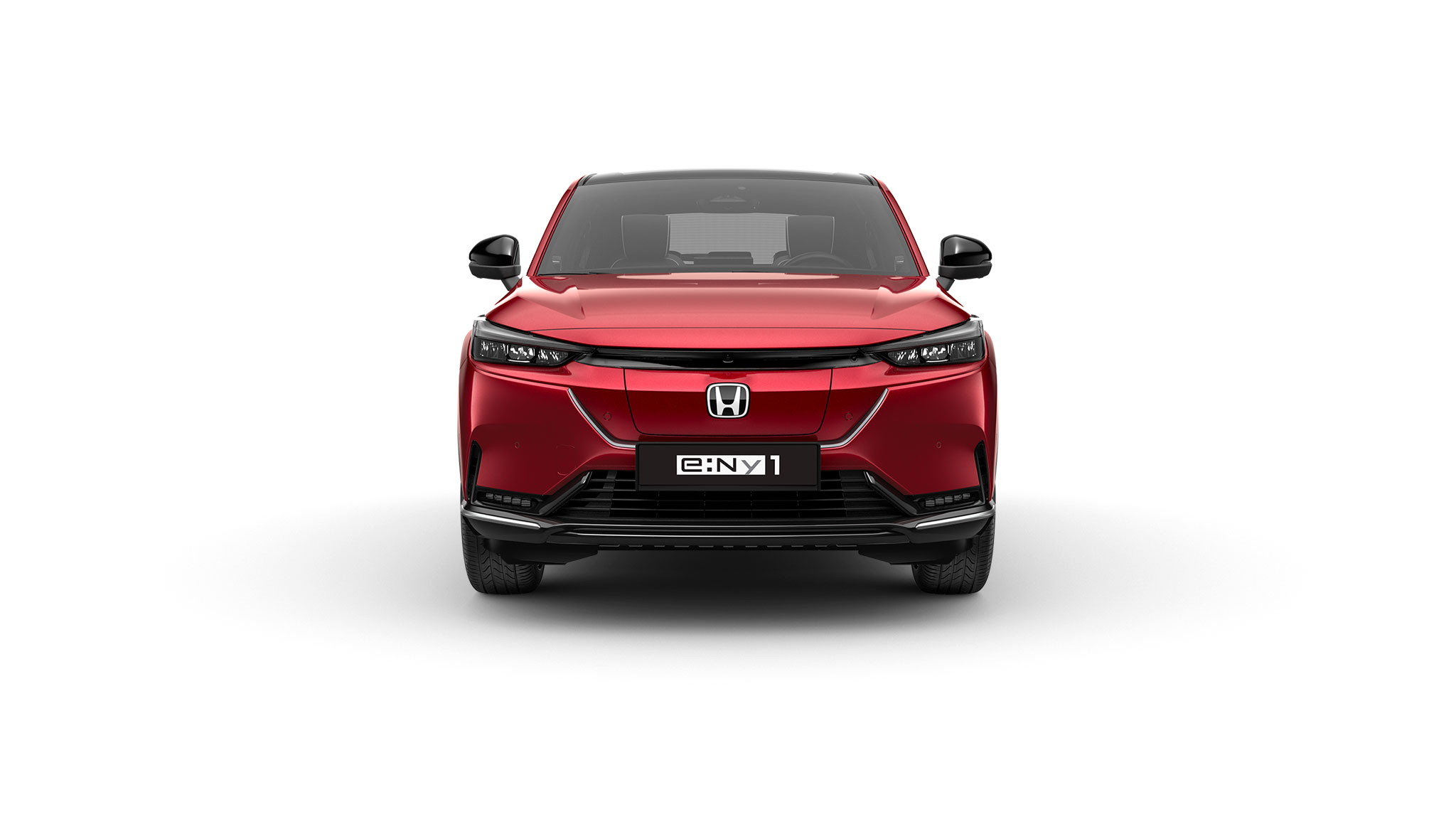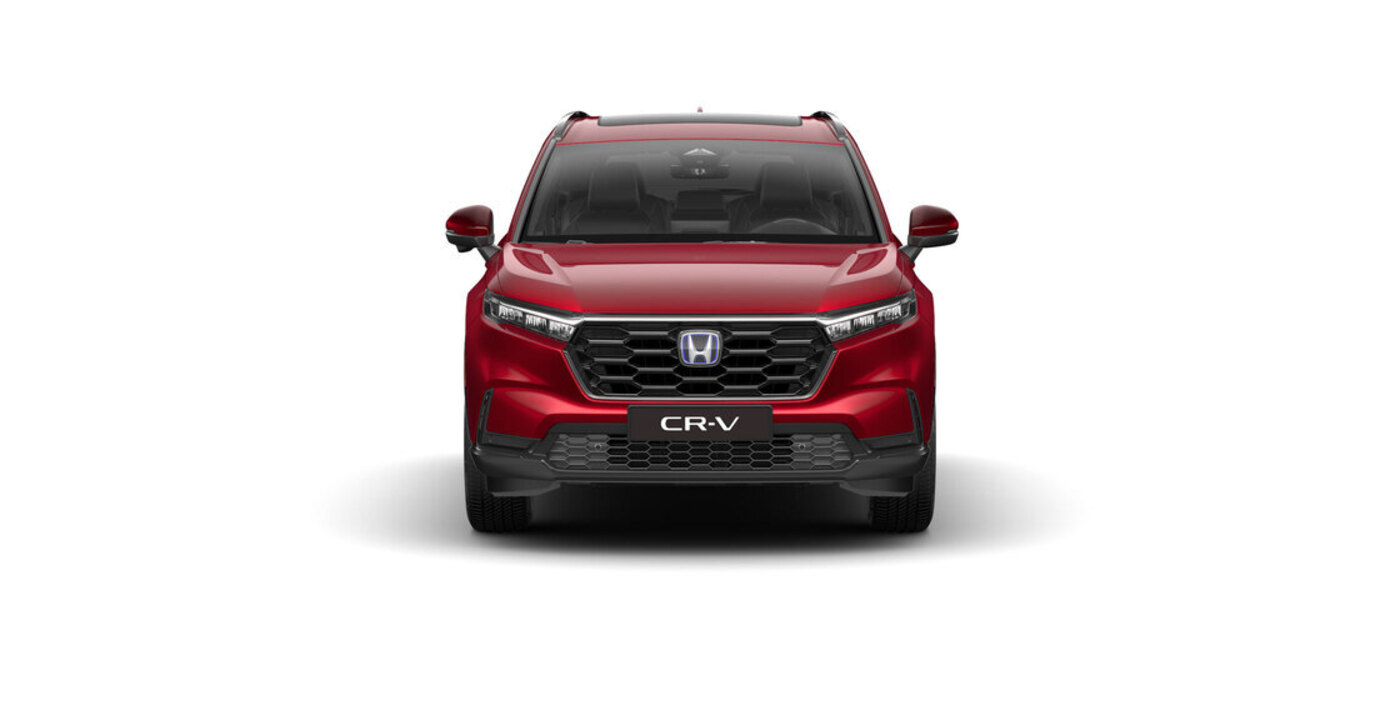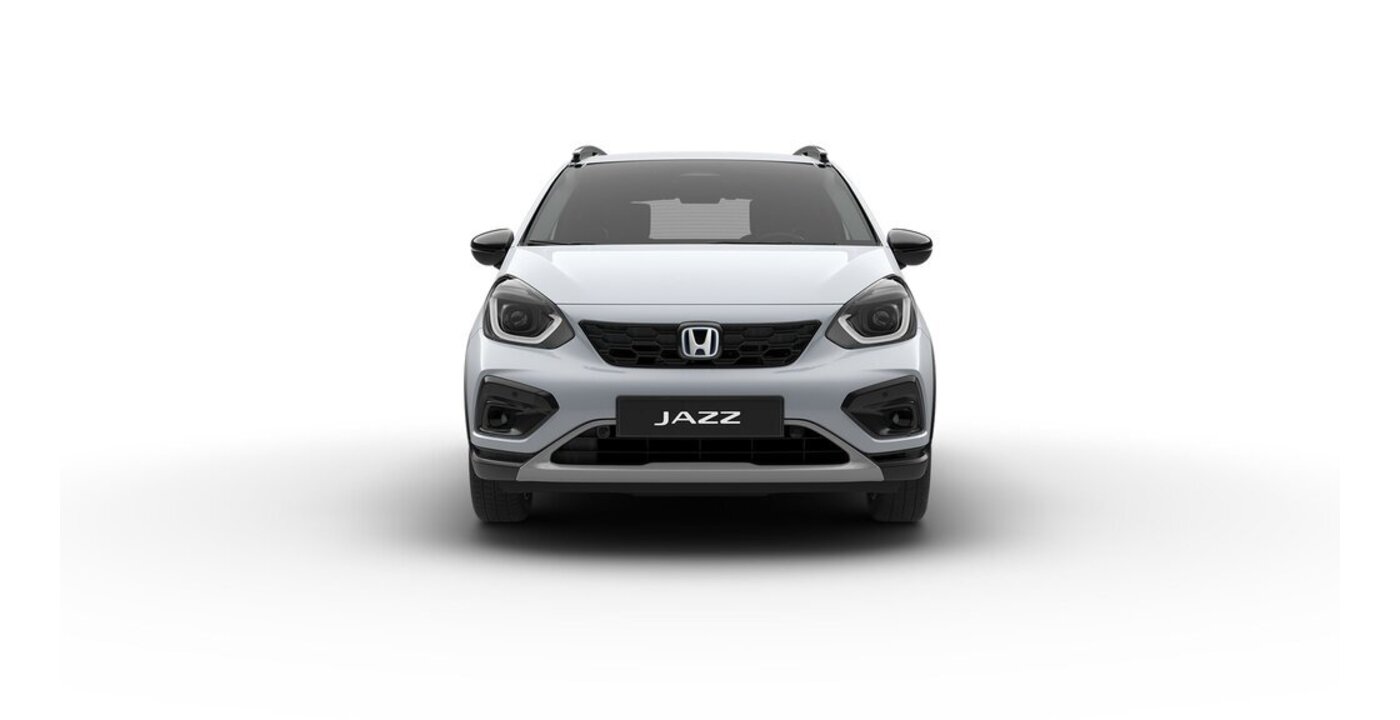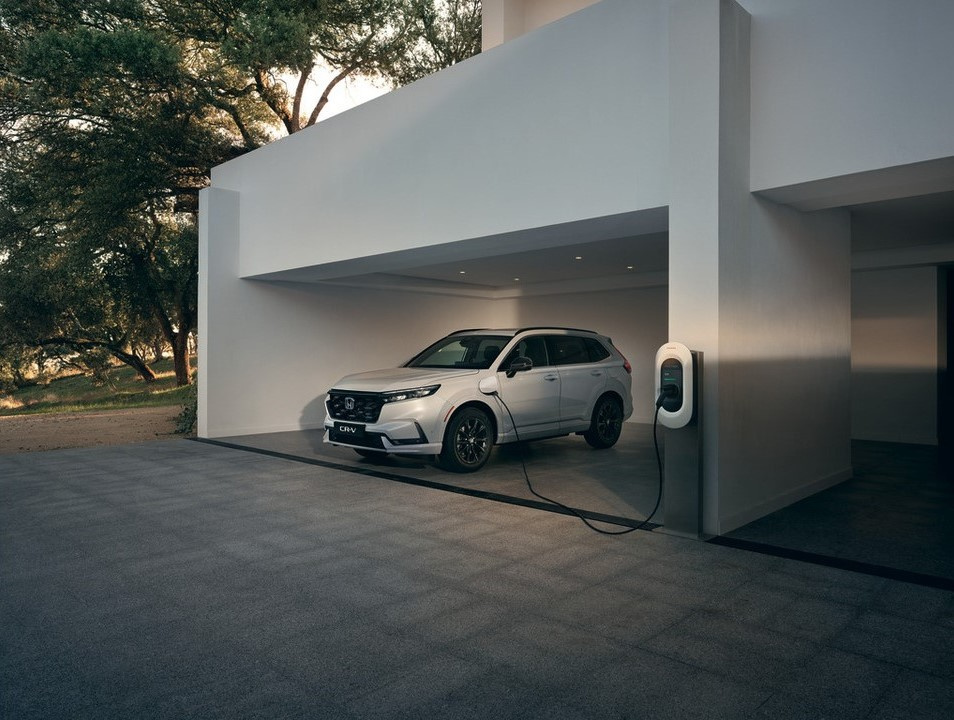Buying and driving electric cars is surging in popularity. With more than a million electric vehicles and hybrids on UK roads as of August 2023, the industry is at an electrifying turning point. This goes in hand with a renewed vision for sustainability across the motoring sector, and a firm focus on cutting carbon globally.
If you’re daunted by the thought of swapping out your petrol or diesel car and flipping the switch to electric, then you’re not alone. But the good news is that for most of us switching to an electric car, and learning to drive it, isn’t that difficult – and you might just love the advantages it brings.
Types of Electric Cars
There are three main types of electrified vehicles: fully electric battery vehicles (BEVs), plug-in hybrids (PHEVs) and fully hybrid vehicles (e:HEVs).

Battery Operated Vehicles (BEVs):
With fully electric vehicles like the Honda e and e:Ny1, the wheels are driven by an electric motor (or motors, plural, in some cars).
When it comes to how electric cars work, it’s relatively simple. The electricity powering the motor comes from a lithium-ion battery, which is why these cars are known as battery operated vehicles. This battery is charged by plugging into a mains electricity supply when the car is parked.
That means you can refuel your car while you’re refuelling your stomach, or going about your daily business, making electric cars incredibly convenient to drive.

Plug-In Hybrid Vehicles (PHEVs)
If you’re looking for a flexible option, cars like the CR-V bring fuel and electric battery drivetrains together. The electric battery provides you with smart fuel efficiency, while the combustion engine backs it up for some extra power and charge-on-the-move capabilities.
Curious about how these systems work together to power PHEVs? Explore the technology behind the cars.

Full Hybrid Vehicles (eHEV)
Also known as self-charging hybrids, these vehicles utilise a combustion engine, electric motor and a battery. They operate using electric power on short journeys, resulting in reduced emissions and fuel consumption.
Both the battery and the engine can supply energy to the electric motor in order to power the vehicle. Cleverly, however, eHEVs are capable of self-charging using energy produced by braking or driving, which removes the need for them to be charged using a plug-in cable.
Driving an Electric Car
If you’re unfamiliar with EVs, it’s natural to ask how to drive an electric car. But the truth is, the differences aren’t that major. You don’t need a different type of driving licence, and you won’t need to learn anything new. In fact, most of the EV driving experience will be quite familiar. If you’ve driven a combustion engine car with an automatic gearbox, then an electric or hybrid vehicle will feel very similar.
• You’ll notice the biggest difference when you start the car, because you won’t hear the starter motor and the engine kicking in as you would in a petrol or diesel vehicle. In fact, you probably won’t hear anything at all – but you’ll see the dashboard instruments come alive.
• A simple selector lever, like that in a conventional automatic car, selects Drive, and then – when you squeeze the accelerator pedal – the car moves away on electric power, almost silently. EVs are often whisper-quiet at low speeds. In fact, some electric cars make artificial noises up to 12mph, just to alert pedestrians.
• You never need to worry that your electric car might stall – another plus! Forget moving through the gears manually, as electric cars provide smooth and seamless acceleration. In a hybrid, the petrol engine will automatically start up when it’s needed, and the gearbox is automatic.
.jpg)
Regenerative braking and Single Pedal control
You’ll see these features in action in battery electric vehicles, and hybrid cars. When driving electric cars, you can reduce the pressure on the accelerator to regulate power flow to the motor. As the momentum of the car takes over, the wheels begin to turn the motor, which now becomes a generator and sends electricity back to the battery for use later. This produces resistance at the wheels, slowing the car down.
With careful use of the accelerator pedal, you can control the speed of the car without needing to use the brakes at all. So, in city driving, for example, instead of constantly moving back and forth between accelerator and brake as road and traffic conditions change, you can just vary the pressure on the accelerator pedal and the car’s speed will follow suit.
With regenerative braking, efficiency takes the spotlight. As you slow down your car, the kinetic energy is absorbed by the battery for even greater range.
If you want to supercharge your electric and hybrid car driving experience with these state-of-the-art driving technology options, you can learn more about regenerative braking today.
Charging an Electric Car
Unsure about how to manage and charge your EV’s battery? Here are a few tips to help you out:
• You can charge a battery electric vehicle at home if you have off-street parking, by connecting to your domestic power supply. It takes around 16 hours for a full charge, or just six hours if you install a charging station at home – but please be aware that charge times can and do vary depending on the car itself.
• Alternatively, an increasing number of companies are installing charging facilities for employees, so you can charge while you work. It’s best to think of charging an electric car the way you would charge your phone. Usually, you put it on charge when it’s not needed – overnight, for instance – so it’s topped up when you go out the next day.
• There are more than 35,000 charging points across the UK at locations ranging from supermarkets and services to National Trust attractions, which you can find using a map of charging points.
• Charging points at supermarkets and car parks are often free.
• Rapid chargers found at places like motorway services offer payment by phone apps or special cards, and it’s increasingly common to be able to pay using a normal contactless credit or debit card.
*Actual charging times may vary depending on various factors: including the age, type, charging capacity, condition and temperature of the charging unit and the battery, max charging rate of the vehicle and the charge point, the starting charge and environmental conditions such as the outdoor temperature at the point of use and the current and voltage available at the charging point. Charge times may be longer in colder weather and if battery temperature activates safeguarding technology.
You can only charge a vehicle’s battery at the maximum charge rate the vehicle can accept. For example, if your vehicle’s max charge rate is 7kW, you won’t charge any faster by using a 22kW charge point. The time it takes to charge will also be limited by the max charging rate of the charge point you are using. For example, even if your vehicle can charge at 11kW, it will only charge at 7kW on a 7kW charge point.

Charging Hybrid Vehicles
Hybrid vehicles are convenient to use because they self-charge, using a generator driven by the combustion engine. If there’s fuel in the tank, the car can charge its battery. The assistance of the electric motor and battery improves the efficiency of a hybrid, which means low running costs – the Honda Jazz hybrid returns 62.8mpg in official tests, for instance. That means less time spent in petrol stations and more time doing what you want to do.
Getting the Most Out of an Electric Car
If the battery runs out of charge in a battery electric vehicle, then, just like a petrol or diesel-powered car running out of fuel, you’ll come to a stop. There are a few things you can do to maximise range when driving EVs:
• Charge up before you set out on your journey.
• Avoid harsh acceleration as this needs more energy. Gentle acceleration is more energy efficient.
• Wherever possible, allow the car to slow just by relaxing the pressure on the accelerator instead of using the brakes.
By easing the pressure on the accelerator, the car can capture some of the lost energy and transform it into electricity, which is sent to the battery to be used again later.
• Anticipate changes in road and traffic conditions and drive accordingly.
For instance, if you can see a traffic light up ahead is changing to red, don’t drive up to it and then brake to a stop. Instead, ease off the accelerator early and slow gradually – if you time it right you might not need to stop at all.
• Plan your journey and know where you’ll need to charge when you’re on longer trips.
Another great advantage of a plug-in car is that you can charge up before your journey. You always have the maximum zero-emission range available every time you set off – unlike a combustion-engine car where you’ll almost always set off with the tank only part full.
So, switching from petrol or diesel to an electric car isn’t as big a leap as some people think. Electric vehicles are quiet, convenient and offer low emissions and low running costs – so it’s easy to see why they’re becoming so popular.
Honda’s vision for the future vehicle is focused on creating an emission-free world while providing a joyful experience to electric vehicle drivers.
Find out all about our range of electric cars today.
FAQs
Can you stall an electric car?
In short – no. Thanks to their automatic transmission, driving electric cars is seamless and simple. The battery manages the drivetrain and there’s no need to think about problems like stalling an electric car, as there’s no clutch or gear to worry about.
Can you push an electric car?
An EV with a depleted charge can only be pushed if it has a neutral gear, like the Honda e. This can be quite helpful in cases where you run out of battery at an unfortunate time.
How does reverse gear work in electric cars?
When driving an electric car, your may have knobs or switches to select the reverse gear. This is more of a familiarisation system, as electric cars don’t work on a gear-based transmission. Internally the battery-based drivetrain reverses, allowing the car to go back.
How do you drive an electric car on a motorway?
There’s no real difference when it comes to driving an electric car on a motorway over a traditional combustion engine vehicle. The experience is generally the same as a normal automatic petrol car, with a few differences, such as a more responsive acceleration in an EV.
Is driving an electric car like driving an automatic?
With only the acceleration and brake pedal present in the EV, the driving experience is essentially the same as an automatic vehicle with a combustion engine, yes. From a technical perspective there is a difference, as there is no gearbox to speak of, but they drive very much the same.
Why do electric cars only have one gear?
A common misconception due to their similarity with automatic cars is that electric cars don’t have any gears to speak of. Instead, they have one or more electric motors that respond to the accelerator pedal by sending a proportional level of electricity to the drivetrain.
Do electric cars have a neutral gear?
In practical use, most modern electric cars have a “neutral state” where you can push and steer the electric car manually. This is not exactly a neutral gear, as they don’t have a gear-based transmission. Some EVs, such as the Honda e, however, do have a neutral gear.




